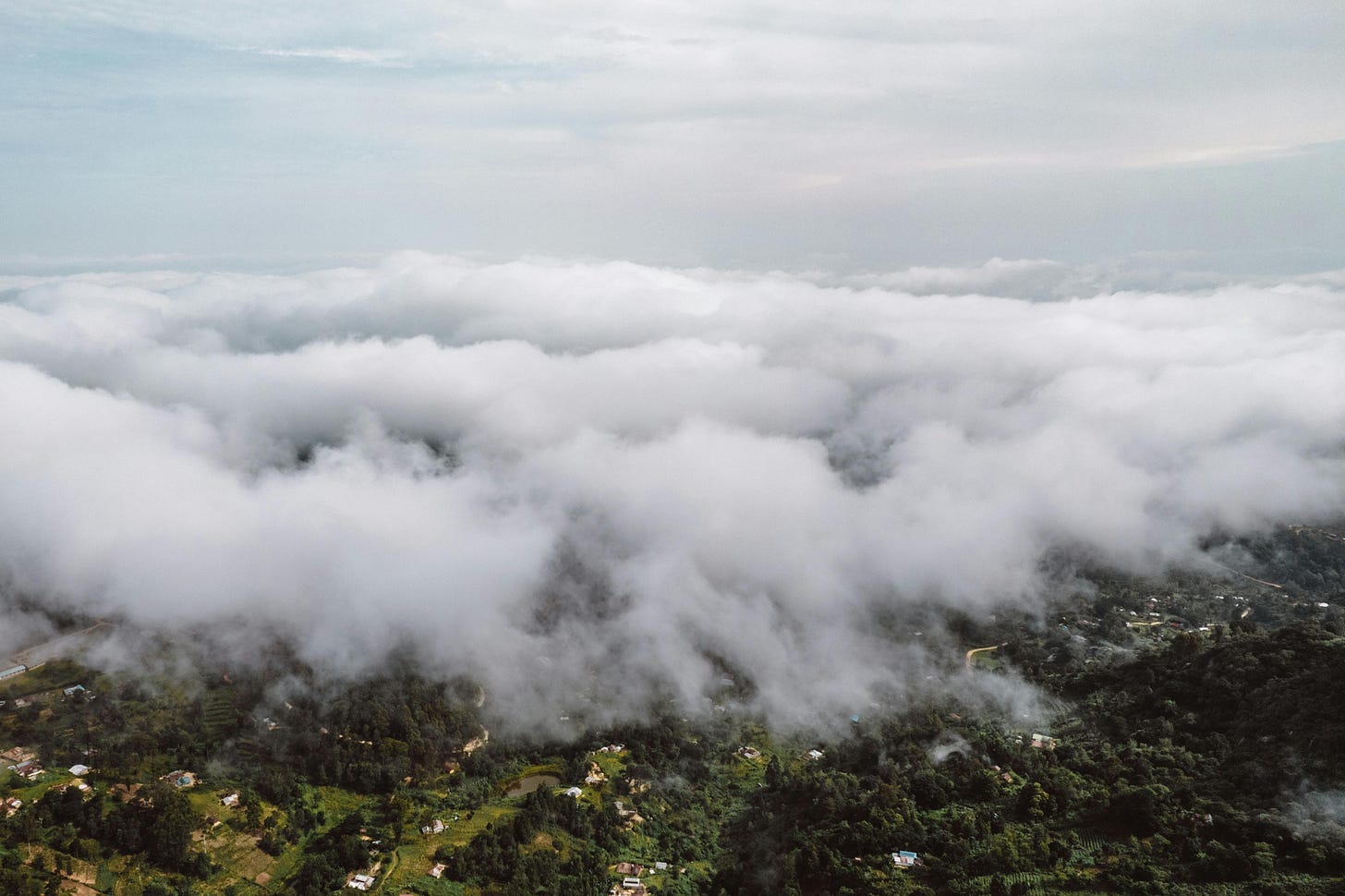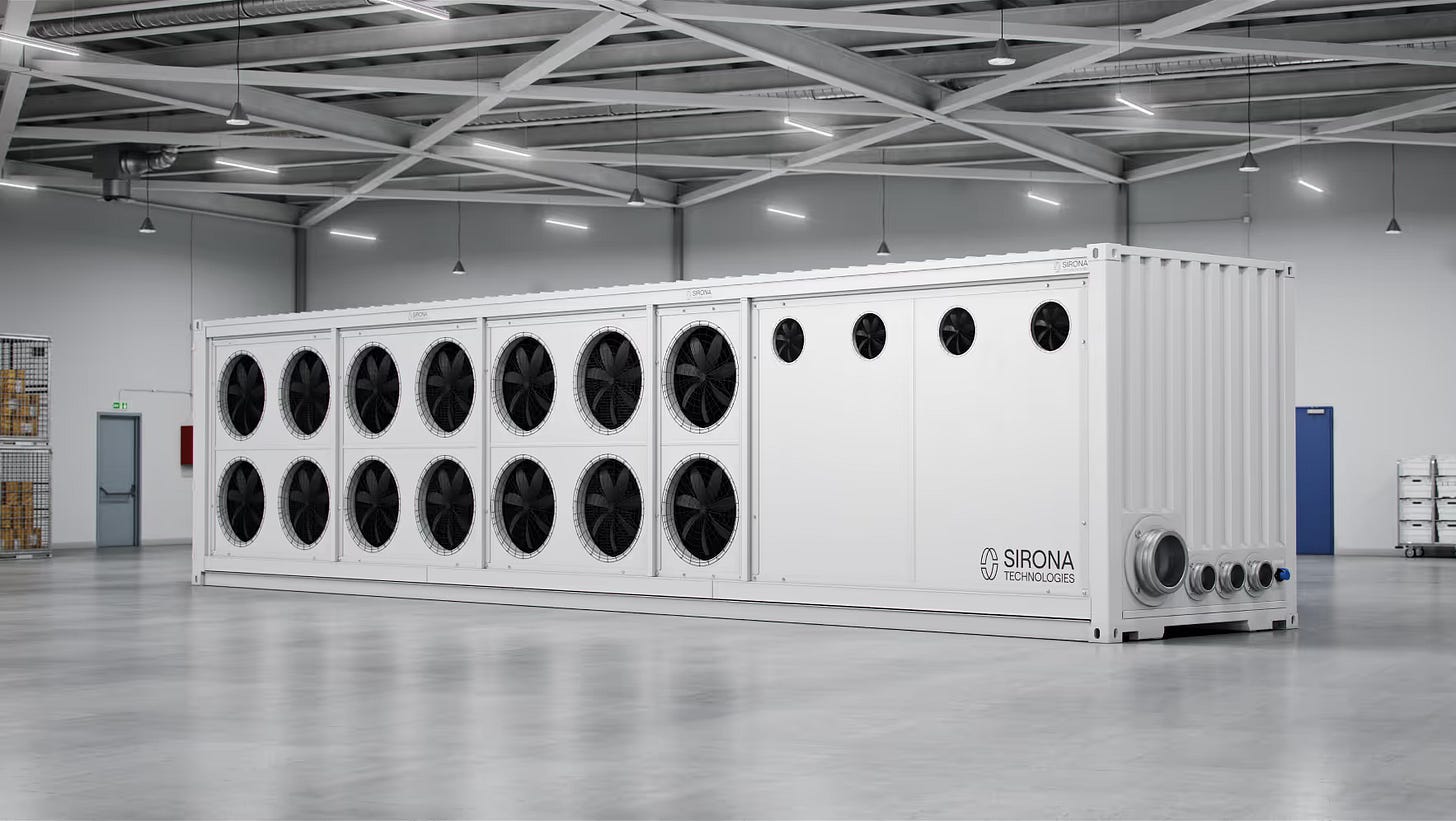Can Sirona outpace billion-dollar carbon capture giants?
A former Tesla engineer is applying rapid iteration and modular manufacturing to carbon removal—challenging the mega-facility model.
Thoralf Gutierrez co-founded Brussels-based Sirona Technologies in 2023 with a philosophy borrowed from the electric vehicle giant Tesla: speed wins when it comes to scaling hardware.
"The priority above everything else is how quickly you can iterate on a technology," Gutierrez told Sustainability in the Air. "The company that can iterate quicker will be able to improve the technology quicker. And over time, pass everybody else."
The approach puts Sirona at odds with other companies building very large direct air capture (DAC) facilities designed for maximum scale. Instead, Sirona deploys shipping container-sized units that can be manufactured on assembly lines and upgraded individually.
Tesla lessons applied to climate tech
Gutierrez's career pivot from Tesla to climate technology stemmed from questions about impact and legacy. After five years of watching Tesla scale from a startup to an automotive giant, he realised that established industries like electric vehicles would succeed with or without his involvement.
"When you work in an industry where capitalism is doing its thing and it's going to happen with or without you, you could be doing something else," he said.
A mentor's question crystallised his thinking: "What do you want to see on your tombstone?" His answer: "Father, and made the world a better place", led him to carbon removal, where he believed small teams could still make a significant impact.
Last year, Sirona raised €6 million in seed funding led by LocalGlobe and XAnge. The company has developed five generations of DAC machines in two years and claims to be the fastest to deploy a pilot plant, going from founding to operational facility in under 24 months.
The energy challenge
Direct air capture is persistently criticised for its massive energy requirements, with critics arguing that the technology diverts renewable power from other uses.
"Energy is a huge deal, and it's a very fair criticism," Gutierrez acknowledged. "Direct air capture only makes sense in a world of abundance of renewable energy." That reality has driven Sirona's geographic strategy.
Rather than building dedicated renewable infrastructure, the company targets regions where clean energy already exists in abundance, particularly Kenya.
The East African nation operates an almost 90% renewable energy electricity grid. According to Expo Group, the country’s current effective installed (grid-connected) electricity capacity is 2,651 MW, with peak demand of 1,912 MW, meaning that much is being unused.
"In a very counterintuitive way, adding more demand on the grid, in their case, helps reduce the cost for everybody," Gutierrez said.
Kenya emerges as DAC hub
Kenya is rapidly becoming a centre for DAC innovation. Octavia Carbon, a company we featured last year, has operated there since 2022; Climeworks has announced partnerships in the country; and Australian firm AspiraDAC recently signed agreements to deploy 5,000 tonnes of annual CO2 removal capacity.
Geothermal resources provide a crucial advantage for Sirona's operations in Kenya's Great Rift Valley. Most DAC energy requirements involve heat rather than electricity.
"The geothermal power plants extract fluids and gases from the subsurface, separate them into gases for turbines, and then have hot brine at 150°C temperature that they just directly re-inject into the ground," Gutierrez explained. "We can co-locate with these geothermal power plants to get…very, very cheap heat."
The captured CO2 is permanently stored through partnerships that inject it into volcanic basalt formations, where it mineralises into rock.

Sirona’s modular strategy
Sirona's container-based approach differs sharply from traditional DAC deployment. While competitors build massive industrial sites, Sirona's factory-built units can be upgraded or replaced individually when technology improves.
"You'll only be able to iterate every time you build a new site versus in our case, every time we build a new container," Gutierrez said.
The company points to recent operational challenges in the DAC industry as evidence that massive facilities can become liabilities when technology needs refinement.
Commercial timeline
Sirona's pilot plant currently removes 15 tonnes of CO2 annually. The company plans to launch its first commercial container in September 2025, with Shopify as its initial customer.
"Look, it's possible to deliver these credits," Gutierrez said. "You just have to go at it with a bit more intensity than some of the existing players."
The company plans to scale operations incrementally by adding containers over time, with its Kenya operations targeting 350,000 tons of CO2 by 2029.
Whether Sirona's manufacturing-focused approach can compete with mega-facility strategies will be clearer as we head towards 2030. But in an industry where billion-dollar projects face years-long development cycles, the company offers an alternative path, emphasising speed over scale.
"It's very much an execution play," Gutierrez said. "It's this speed and scale approach, industrialisation approach to the space."




